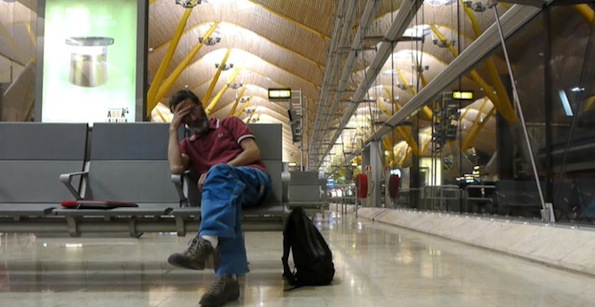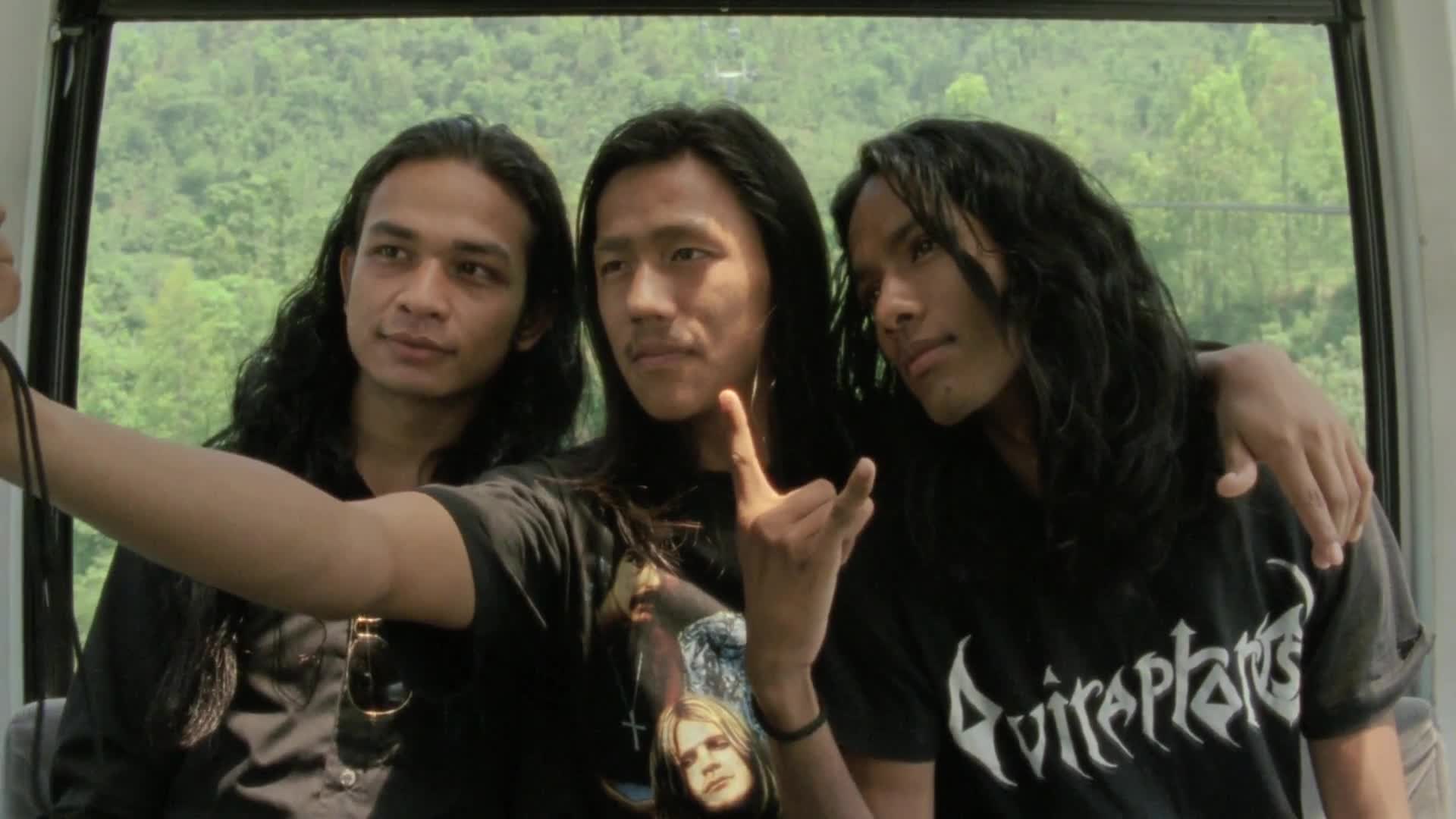
[This list is part of our Fifty Days, Fifty Lists project. For more lists, see ‘Why Lists?‘ here on Keyframe.]
The American audience for documentaries is at a crossroads. The most popular non-fiction film released in the U.S. this year was a right-wing diatribe from Dinesh D’Souza that probably benefited from Obama’s sinking popularity and being released in an election year. But doc festivals are proliferating, and the mixture of narrative and non-fiction is also sprouting new forms. HBO and PBS continue to showcase documentaries, although they never seem to get around to anything like the avant-garde work coming from Harvard’s Sensory Ethnography Lab.
But much of the audience for docs seems to see them on TV or stream them on Netflix, perhaps expecting shabbily shot low-grade video work that doesn’t require the big screen. Critical enthusiasm for documentaries probably hasn’t been this high since the 1960s, but the buzz for a film like Robert Greene’s Actress only translated into a $5,000 opening weekend gross. That crossroads is looking more and more like a crisis, unless filmmakers are happy with one-week New York runs and working on TV commercials and reality shows to pay the bills.
1. What Now? Remind Me (Joaquim Pinto)
The most ambitious documentary I’ve seen this year, Portuguese director Pinto’s film runs for nearly three hours. Nominally, it’s a diary of a year in which he underwent experimental treatment for HIV and hepatitis C, but it sprawls through his life in a manner that suggests a synthesis of Jonas Mekas and Chris Marker. Its affinities lie as much with avant-garde film as with more traditional documentaries, and it’s all the stronger for it.
2. Actress (Robert Greene)
As much of a genre-bender as What Now? Remind Me, Greene’s film presents a singular heroine: Brandy Burre, a one-time actress (who appeared for two seasons on The Wire) who gave up her craft to become a suburban homemaker and then got bored with that life. Actress traces the dissolution of her relationship with her partner Tim and her attempts to return to acting, but what’s really remarkable about it is its direction, which combines elements of cinema vérité with extremely stylized sequences, depicting Brandy’s everyday life through slow motion and supersaturated color.

3. The Dog (Allison Berg and Frank Kerarden)
Much more formally conventional than my top two choices, The Dog nevertheless shows the power of judiciously chosen archival footage and well-conducted interviews. Focusing on John Wojtowicz, the real-life inspiration for Al Pacino’s character in Dog Day Afternoon, it doubles as a history of the gay liberation movement of the early 1970s, even showing one of the very first same-sex weddings conducted in New York state. It also serves as a warning about the perils of fame, but cautionary tales rarely come this exhilarating.
4. The Naked Room (Nuria Ibañez)
Shot in a Mexican mental health clinic, Ibañez’s film sticks to an extremely formalist playbook: nothing but interviews with children and teenagers. We hear their psychiatrists and parents at times but never see them. Additionally, Ibañez shoots her subjects entirely in close-up. She succeeds in giving them a radical degree of respect, rarely granted to youth inside and outside of cinema.
5. The Life & Crimes of Doris Payne (Matthew Pond and Kirk Marcolina)
Many recent documentaries have aimed for the glamour and narrative propulsion of Hollywood action movies and thrillers. Few have really achieved it. This one does so. Telling the story of Doris Payne, an octogenarian African American jewel thief, it explores her choice of a life of crime as an act of existential rebellion against a sexist and racist society. At the same time, it doesn’t glorify robbery; if it finds something admirable in Payne’s thefts in the 1960s and 1970s, it sees something pathetic about the fact that she’s still heading in and out of jail as a senior citizen.

6. CITIZENFOUR (Laura Poitras)
Now based in Berlin, Laura Poitras is one of more than a million people on the U.S. government’s watch list. I wish her film, which centers around an hour depicting Glenn Greenwald interviewing Edward Snowden for the first time in Hong Kong, had been a bit more personal and explored what it’s like for her to be a target-she’s part of the story CITIZENFOUR tells, but she effaces her own role. However, she effectively conveys Greenwald and Snowden’s justifiable paranoia and does a terrific job of humanizing a man many Americans have written off as a traitor.
7. Maidentrip (Jillian Schlesinger)
A chronicle of Dutch teenager Laura Dekker’s sailing alone around the world, this is a rare depiction of healthy female adolescent rebellion. At once a coming-of-age tale and an ode to Dekker’s athletic feats, it was mostly shot by the girl and later edited into feature-length by American director Schlesinger. But it feels like a film that could’ve been entirely made by Dekker.
8. Jodorowksy’s Dune (Frank Pavich)
Cult director Alejandro Jodorowsky may be the last remaining hippie alive. His unreconstructed ‘60s sensibility may trip him up at times, as when he talks cavalierly about rape, but it also leads to an unabashed idealism about the power of art that one probably would never hear from a filmmaker in his or her 20s. This film deals with his attempts to make a big-budget sci-fi spectacle from Frank Herbert’s novel Dune (eventually directed by David Lynch). Judging from what Pavich shows us, the results probably wouldn’t have been a hit, but they would’ve been as mindblowing as his 1970s midnight movies.
9. The Overnighters (Jesse Moss)
A sober examination of Christianity, charity and the areas where sexuality becomes dangerous, The Overnighters takes us to the oil fields of North Dakota, which have become one of the few boom towns of post-recession America. There, a pastor tries to help the men who’ve been left behind by the American Dream, but he may have a hidden agenda. It’s difficult to talk about this film seriously without getting into spoilers-rare for a documentary-but it works well as a narrative, with a devastating ending.

10. Manakamana (Stephanie Spray and Pacho Velez)The latest product of the Sensory Ethnography Lab is gentler and more humane than Leviathan. Shooting in Nepal, American directors Spray and Velez capture people riding on their way to a temple in ten-minute takes. (In one scene, they film three goats.) This film demands patience but rewards it; small details come to take on great fascination, especially since the trip is repeated 11 times (with different people in the carriage). It’s an unfashionably meditative undertaking.



